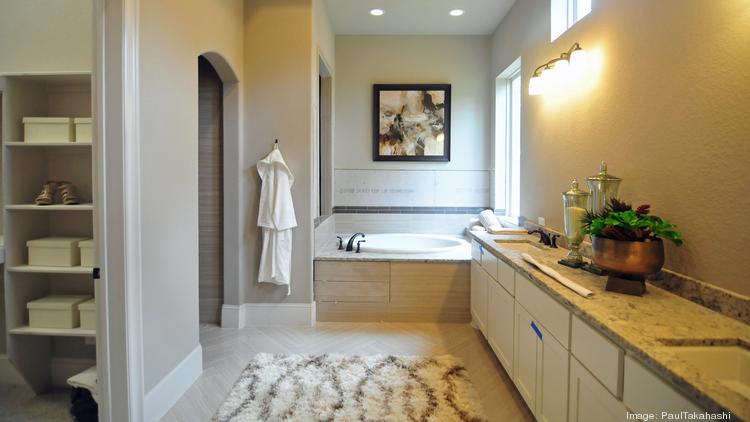Staging a home for sale can pay off big for Realtors and homeowners.
On average, redecorating and remodeling a home can bring three times the return on investment at closing, according to Greg Williams, a new owner of Showhomes Houston.
“(Staging) helps homes sell faster and for more money,” Williams said.
Williams and his partner Steven Cook
are the new owners of the local franchise of Showhomes, a Nashville,
Tennessee-based company that provides home staging and managing services
to help sell residential real estate.
Williams, an interior designer, and Cook, a
senior vice president with Space City Credit Union, have more than five
years of experience with Showhomes, managing and staging luxury homes
for high-end Realtors and clients.
Staging is a science more than an art, and has become an integral part of selling homes, Williams said. Unlike interior design, staging is done not to suit the current homeowners’ tastes, but to make the home appealing to a wide range of prospective buyers.
“Our goal is to bring out the positive
features of the property and improve its show quality,” Williams said.
“We want to show the buyer the potential that the home has for them.
Everything we do is geared toward getting more money at closing.”
Here are five tips to stage a home to sell, according to Williams.
1. Update carpets, wall paint and countertops.
Remodeling is costly, but replacing the
carpets, putting a fresh coat of paint and upgrading the countertops can
really make a difference in selling a home.
Williams recommends carpets that are
low-profile, sleek and don’t take over the space; light, neutral paint
colors; and light-colored quartzite or Carerra marble countertops that
are more durable and dense than dark granite countertops.
“Buyers have certain expectations,” Williams said. “They don’t want fixer-uppers anymore. They want immediate gratification.”
2. Declutter. Less is more.
Williams recommends using a few focal point
pieces — larger-scale art and furniture — to bring buyers’ eyes to the
space, but not detract from it.
In particular, buyers pay close attention to the kitchen and master suite, which are often cluttered with knick knacks.
Williams recommends decluttering the kitchen
and creating a spa-like atmosphere in the master bedroom and bathroom.
That means: removing unused appliances from kitchen countertops, getting
rid of decorative pillows from the bed and putting clean white towels
in the bathroom, he said.
3. Homes need a lived-in look.
Vacant homes often take longer to sell because buyers think the homeowner is desperate to sell.
Getting a so-called “home manager” to live
on the property to give it a lived-in look can help reduce the chance of
getting low-ball offers, Williams said. Even when staging homes, the
changes should feel organic, he added.
“Homes shouldn’t have that staged look,” Williams said. “They should look like someone lives there.”
To order your copy of Remodeling Hell, CLICK HERE
For more information about Remodeling Hell, CLICK HERE
For more information about the Summit Murder Mystery series, CLICK HERE
Follow me on TWITTER
Friend me on FACEBOOK
Follow me on PINTEREST

